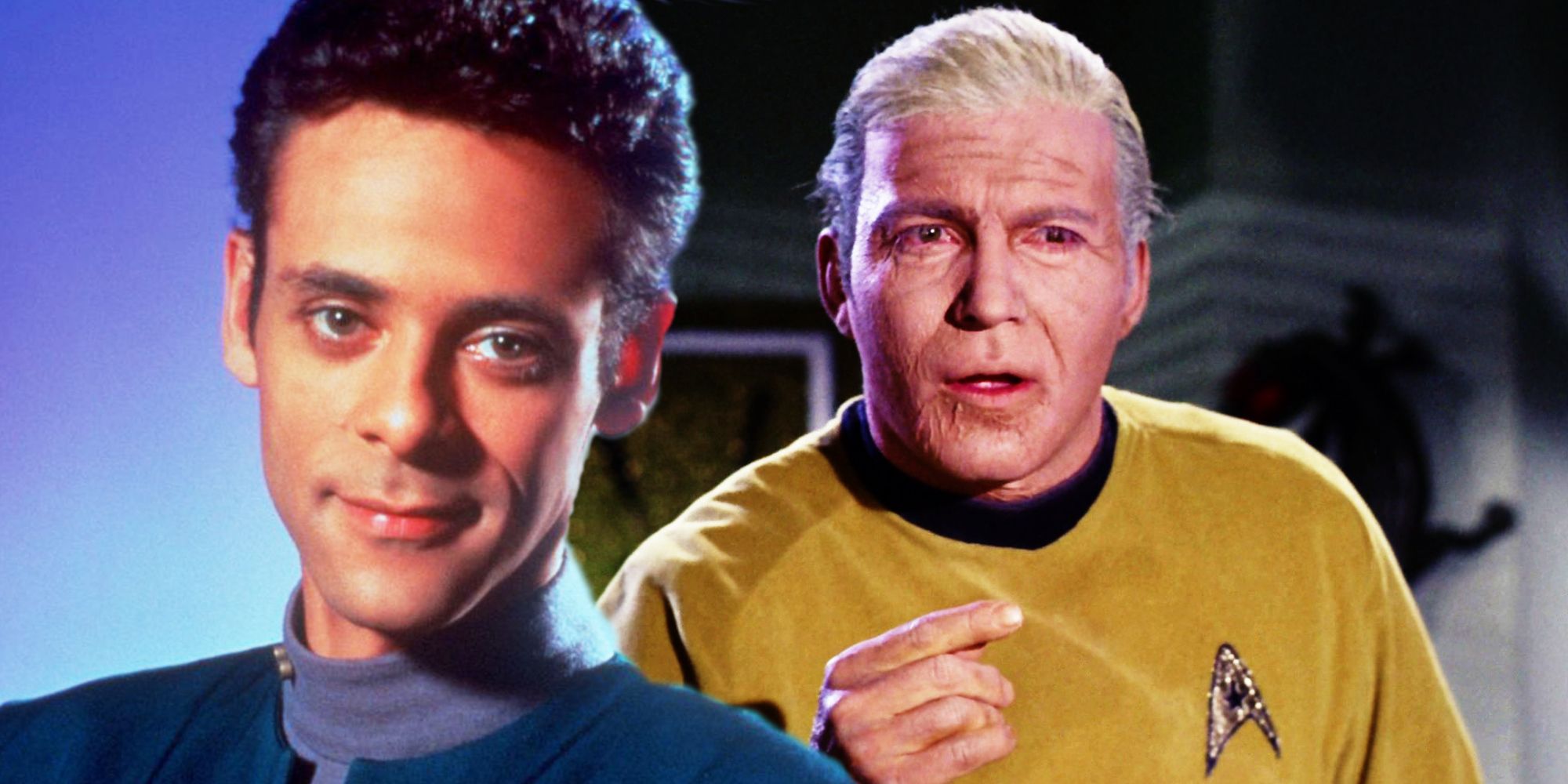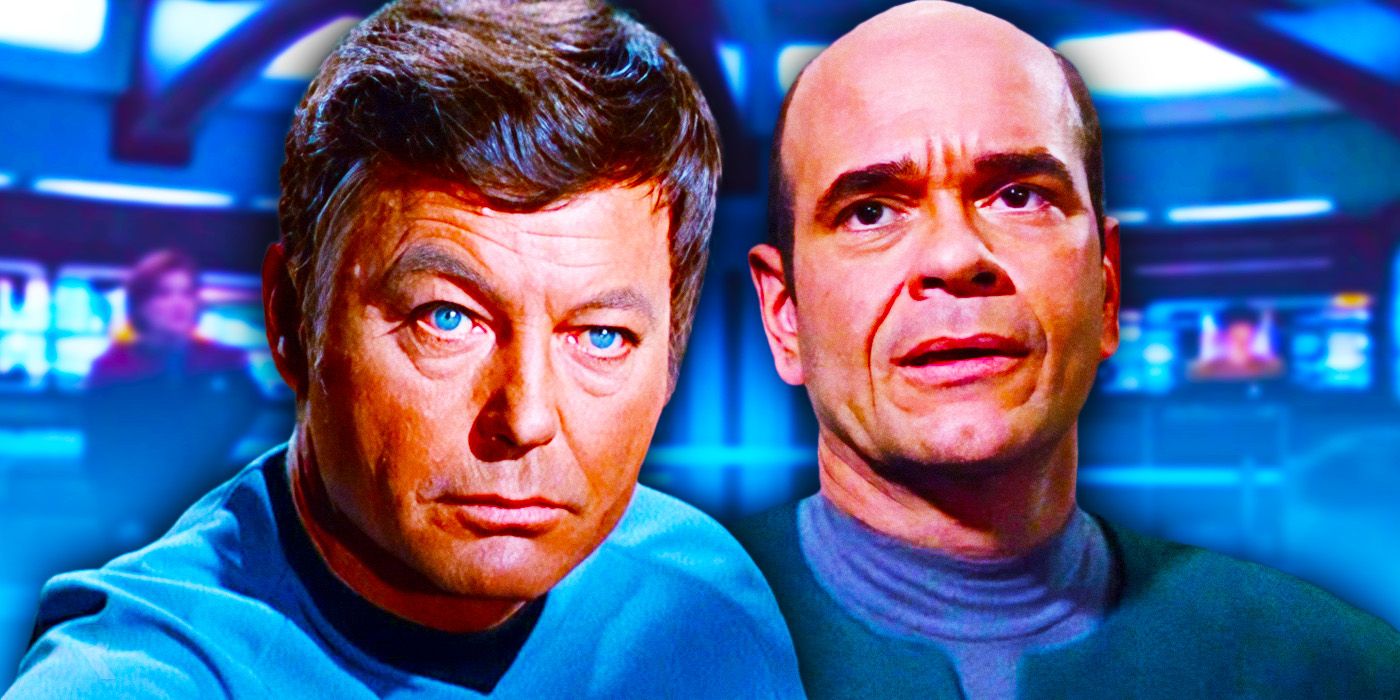Summary
- Star Trek: DS9's nod to TOS episode "The Deadly Years" showcased a deep connection to the original series' canon and continuity.
- Writer Ronald D. Moore's love for TOS influenced many DS9 episodes, with references like Hyronalin connecting the two series.
- The use of Hyronalin in DS9 showcased medical continuity with TOS, with similar treatments also appearing in TNG and Voyager.

Star Trek: Deep Space Nine contained a deep-cut Star Trek: The Original Series Easter egg from the episode "The Deadly Years", but it ended up having a deeper meaning. In TOS season 2, episode 12, an Enterprise away team is exposed to fatal radiation that triggers rapid aging. With scenes of the Star Trek: TOS cast in old man make-up, and the countdown clock tension, "The Deadly Years" became a beloved TOS episode. As Star Trek: DS9 was packed full of major and minor references to TOS canon, a nod to a classic episode like "The Deadly Years" is hardly surprising.
Writers like Ronald D. Moore grew up as fans of Star Trek: The Original Series, and that greatly influenced many of the scripts they wrote in the 1990s. Many of Ronald D. Moore's Star Trek episodes contained references, big and small, to the continuity of TOS. As well as helping to build connections between 1990s shows like Star Trek: Deep Space Nine to TOS canon, these references were reflective of Moore's obsessive fandom, as he reflected in the Star Trek: Deep Space Nine Companion:
" There's a lot of references from the original series rattling around in my head, because I watched it fanatically as a kid. Somehow it's easier to remember those references than the stuff I worked on a few years ago on TNG. "
Dr. Bashir Used An Anti-Radiation Drug From Star Trek: TOS’ “Deadly Years” Episode
Bashir's "Deadly Years" reference foreshadowed his next DS9 episode.
In Star Trek: Deep Space Nine season 3, episode 17, "Visionary", Chief O'Brien (Colm Meaney) is exposed to fatal radiation that allows him to jump through time. Although "Visionary" was written by John Shirley from a story by Ethan H. Calk, Ronald D. Moore did have some uncredited input into the final script. One of Moore's additions to the script was Doctor Bashir (Alexander Siddig) using Hyronalin to treat O'Brien's radiation poisoning. Hyronalin was first mentioned in Star Trek: The Original Series season 2, episode 12, "The Deadly Years", when Doctor McCoy (DeForest Kelley) discussed potential treatments for the effects of rapid-ageing radiation.
In DS9 season 3, episode 18, "Distant Voices", Bashir finds himself in a hallucinatory reality where he, like the TOS cast, ages rapidly during a race against time to save the station and himself.
Ronald D. Moore's insertion of Hyronalin into the "Visionary" script maintained a medical continuity between Star Trek: Deep Space Nine and Star Trek: The Original Series. However, Doctor Bashir's reference to "The Deadly Years" ended up being an unintentional, and purely coincidental, set-up for the next episode of DS9, which was Bashir-centric. In DS9 season 3, episode 18, "Distant Voices", Bashir finds himself in a hallucinatory reality where he, like the TOS cast, ages rapidly during a race against time to save the station and himself.
The old-age make-up in "Distant Voices" won Star Trek: Deep Space Nine an Emmy for Outstanding Individual Achievement in Makeup for a Series, beating Star Trek: Voyager 's "Faces".
Other References To TOS' Anti-Radiation Drug In Star Trek

In reference to Star Trek: The Original Series, Ronald D. Moore told the Star Trek: Deep Space Nine Companion that "it's easier to remember those references than the stuff I worked on a few years ago on TNG." He might have had a point, as he's clearly forgotten that Star Trek: The Next Generation used Hyronalin twice, first in "Final Mission", when the crew of the USS Enterprise-D were exposed to radiation from a 300-year-old garbage scow, and again when Doctor Beverly Crusher (Gates McFadden) and Lieutenant Commander Geordi La Forge (LeVar Burton) were exposed to plasma fire in "Disaster".
And it wasn't just Star Trek: The Next Generation and Star Trek: Deep Space Nine that maintained continuity with Starfleet Medical's anti-radiation treatments. Robert Picardo's Doctor used Hyronalin in Star Trek: Voyager season 3, episode 22, "Real Life". When Lieutenant Tom Paris (Robert Duncan McNeill) was exposed to radiation from an astral eddy, the EMH treated this poisoning with a combination of Hyronalin and Lectrazine, suggesting treatments were beginning to move on from what had been established during Star Trek: The Original Series' "Deadly Years".



